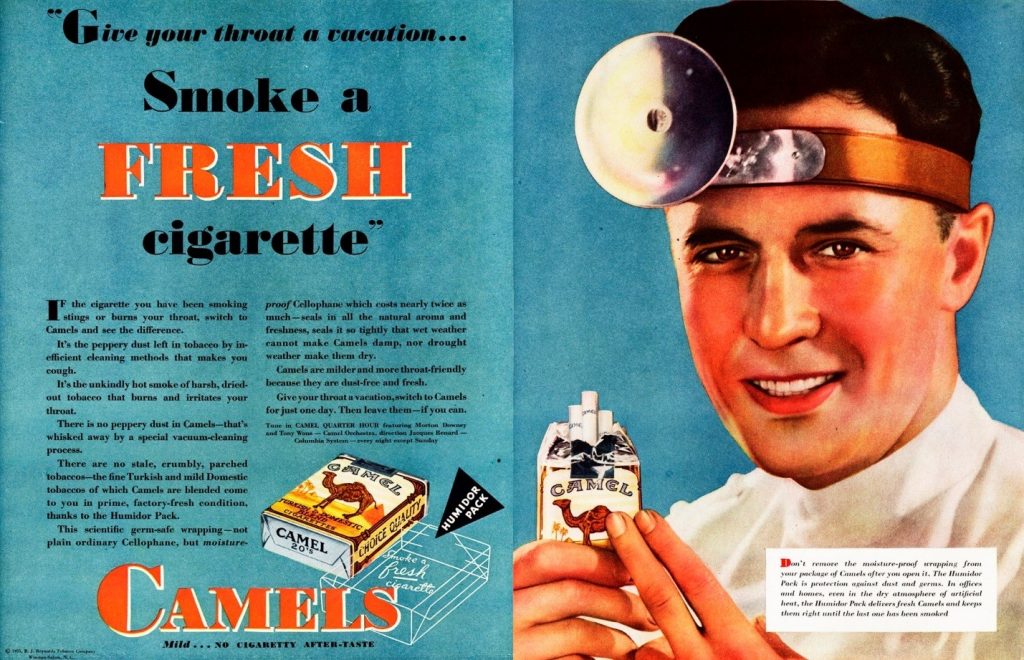What Marketers Can Learn From The Onion: Interview with founding editor Scott Dikkers
Change. Is. Scary.
There was a time, not very long ago, when marketers were the only ones that had the resources to get the message out about products. And they did it through print, TV, and radio ads.
And because of this one-sided power, advertisers would pretty much just say whatever ridiculous bunk they could come up with to sell their product. Like this ad from 1931, in which a “doctor” shills for cigarettes.
According to the Stanford School of Medicine, “The doctors depicted were never specific individuals, because physicians who engaged in advertising would risk losing their license. It was contrary to accepted medical ethics at the time for doctors to advertise, but that did not deter tobacco companies from hiring handsome talent, dressing them up to look like throat specialists, and printing their photographs alongside health claims or spurious doctor survey results. These images always presented an idealized physician wise, noble, and caring.”
Not surprisingly, customers became skeptical over time. And marketers’ jobs got harder. But that was nothing compared to what was about to happen.
The digital revolution
In the year 2000, 50% of adult Americans were using the Internet, according to Pew Research Center. By 2013, that number hit 86%.
With the advent of the web, more and more customers were given an outlet to express their opinions about products and services. This exploded further with social media. No longer did marketers and brands have the market cornered on communication about products and services.
This was a massive change that made marketers’ jobs exponentially harder. Sure, there was the splintering of media. But the real challenge was in the change in brand voices. The Internet created the most skeptical generation yet. If marketers could no longer get away with ridiculous boasts, what should their voice be to customers? How could they convince and connect with customers in the age of the Internet?











